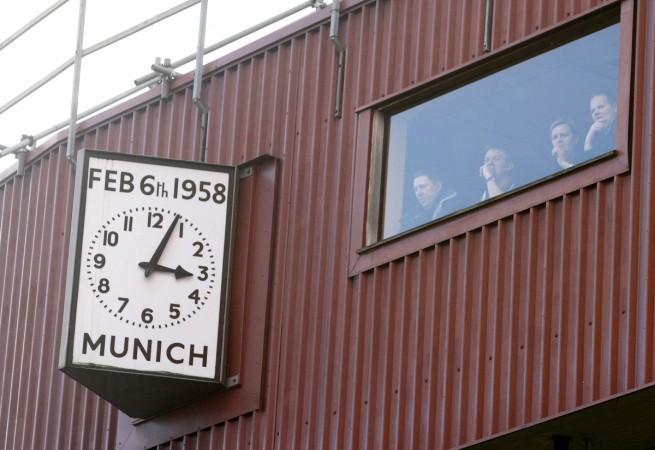
Tragedy struck late on Monday night as a Bolivian charter airline named Lamia, carrying players of southern Brazilian football side Chapecoense, crashed on its way to the Jose Maria Cordova international airport in Medellin, Colombia. According to the Agence France-Presse, 25-year-old defender Alan Ruschel and Marcos Danilo might be the only players to have survived the incident.
According to Telemundo Deportes, Ruschel, although in complete shock, remained conscious and also asked the rescuers to keep his wedding ring safe and said that he wanted to see his family.
The Brazilian side were scheduled to play their first of a two-game Copa Sudamericana final against Atletico Nacional of Medellin, on Wednesday. The South American Cup final has been called off in light of the incident, the South American Football Confederation (CONMEBOL) has announced. Three days of mourning has also been announced in Brazil.
Apart from Ruschel and Danilo, only three other passengers have reportedly survived the crash. The chartered airline, carrying 72 passengers and nine crew members, according to the aviation authorities, reportedly crashed in Cerro Gordo, La Union, area in Medellin, Colombia. Twenty-five bodies have reportedly been recovered from the crash site so far.
An "electrical failure" in the airline remained the root cause of the tragedy.
Chapecoense football club have issued a brief statement saying: "May God be with our athletes, officials, journalists and other guests travelling with our delegation." No further comments were made as they preferred to observe the extent of the tragedy.
"This morning I said goodbye to them and they told me they were going after the dream, turning that dream into reality," a Chapecoense board member told TV Globo, as quoted by Telegraph UK. "The dream was over early this morning."
Chapecoense joined Brazil's first division in 2014 for the first time since the 1970s and made it last week to the Copa Sudamericana finals - the equivalent of the UEFA Europa League tournament.
— Chapecoense (@ChapecoenseReal) November 29, 2016
Chapecoense players celebrating reaching the Copa Sudamericana final 5 days ago. May their souls rest in peace! <3 pic.twitter.com/cmsiI0WIGN
— Uber Football Facts (@UberFootbalI) November 29, 2016
The Chapecoense players who didn't travel with the team in their dressing room today. ???⚽️?? #ForçaChapecoence pic.twitter.com/q1Z4mIRwjY
— Uber Football Facts (@UberFootbalI) November 29, 2016
Que essa seja a última imagem dos nosso guerreiros.#ForçaChape pic.twitter.com/Q1ZxF5h4sV
— Chapecoense (@ChapecoenseReal) November 29, 2016
This is unfortunately not the first time that such a tragedy has struck a football team. If we look back at the pages of history, we can find more such incidents.
Here's a list of some major tragedies:
Munich air disaster
Date: February 6, 1958.
What had happened: The infamous incident changed the landscape of European football and Manchester United completely.
A British European Airways flight 609 crashed on its third attempt to take off from a slush-covered runway at the Munich-Riem Airport, West Germany. On the plane were the "Busby Babes", the Manchester United team members, coached by Sir Matt Busby. Also present in the flight were supporters and journalists.
Total fatalities: 23 (includes 8 players + 3 members of the club staff).
Survivors: 21.
Zambia national football team air disaster
Date: April 27, 1993.
What had happened: A Zambian Air Force de Havilland Canada DHC-5D Buffalo (registration AF-319) crashed into the Atlantic Ocean about 500 metres (550 yards) offshore from Libreville, Gabon. The flight was carrying most of the Zambian national football team to a FIFA World Cup Qualifier against Senegal in Dakar.
Total fatalities: 30.
Survivors: None.
LAN Chile Flight 210
Date: April 3, 1961.
What had happened: One of the worst ever air disasters in Chile saw the LAN Chile Flight 210, scheduled to travel from Castro, Chile to Santiago disappear in the Andes. The last radio message from the plane, carrying team members of former Chilean football club, Club de Deportes Green Cross, reported ice covering the wings and propellers. In February last year, the aircraft's fuselage was discovered after more than 50 years in the Chilean Andes.
Total fatalities: 24 (includes 8 team members).
Survivors: None.
Dniprodzerzhynsk mid-air collision
Date: August 11, 1979.
What had happened: A misinformation from the Air Traffic Controller (ATC) resulted in a mid-air collision of two Aeroflot Tupolev Tu-134 passenger jets over the Ukrainian SSR, near the city then named Dniprodzerzhynsk. One of the aircrafts carrying the members of Uzbek football club Pakhtakor Tashkent FK, bound for Minsk, collided with the other aircraft in a cloud, at 26,000 feet (7,900 m).
Total fatalities: 178 (entire team killed).
Survivors: None.
Superga air disaster
Date: May 4, 1949.
What had happened: In the first of its major air tragedies in the 20th century involving association football teams, a Fiat G.212 aircraft of the Avio Linee Italiane (Italian Airlines), carrying the entire Torino football team (which also consisted major members of the Italy football team at that time) crashed into the retaining wall at the back of the Basilica of Superga, which stands on the hill of Turin, owing to low visibility.
Total fatalities: 31 (most of the senior team members of Torino killed).
Survivors: None.

















